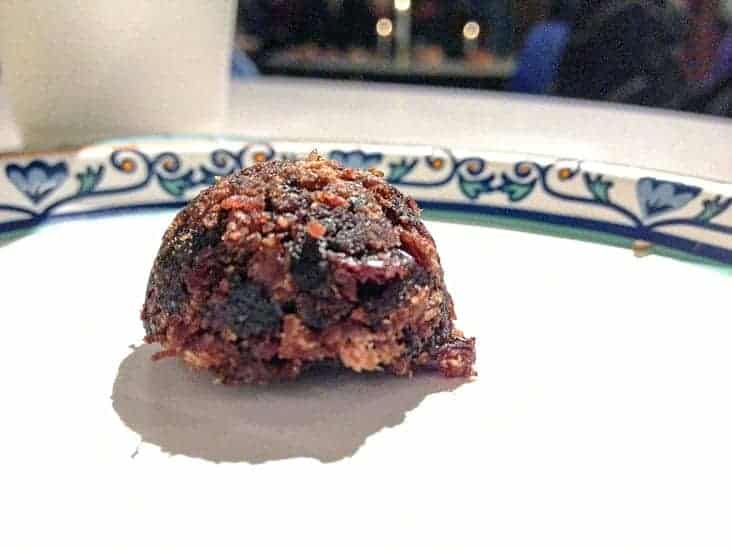by Walt Humphries
This is an ode to pemmican. Once upon a time it was a superfood, and a necessity of life.

photo courtesy of Wikimedia Commons
It was probably invented in the Americas by one or more groups of Indigenous peoples. When I read books about the inhabitants of the Americas from the Incas to the Inuit, books about the fur trade or ones about Arctic and Antarctic explorers, they often mention the importance of pemmican. So, move over keto diet, the pemmican diet may be making a comeback.
I was a little surprised that no one was making or selling the stuff commercially, not even as a novelty or historic food. So, one time before I headed out on a winter bush job to cut some lines on my claims, I decided I would make some myself and try it out. Now if you are an avid vegetarian who gets upset at the mere mention of meat or animal fat, read no further.
To make pemmican you need a chunk of red meat and traditionally it would have been wild meat. You cut off the fat and put it aside and then cut the meat into thin slices which you dry. I didn’t have any wild meats available at the time, so I got a chunk of beef from the store, froze it and then cut it into the thinnest slices possible. I couldn’t dry it in the sun so I used the oven turned on low or on a rack above my wood stove, when I was using it.
It took several days and then I was faced with the challenge of pulverizing it. I didn’t have any rocks readily available, so I used a prospector’s hand sledge and a butcher block I had found at the dump. The powder I divided into two bowls because I was going to make two different flavours or types of pemmican.
Most recipes suggest a 50/50 ratio of powdered meat to fat. That seemed like a lot of fat, so I cut it back a little. For the first batch I used rendered beef fat and in the second I used bacon fat because I thought it would be tastier. I also got some dried fruit, cranberries and raisins to chop up and add to it. After I mixed it all up and tasted it I thought, “OK I am not going to be a purist about this,” so I added a little salt to the beef version and honey to both, along with a little onion powder and garlic powder. Next you press it into bricks and traditionally it would be stored in leather bags. Not having any leather bags to spare I put each brick into a ziplock bag.
People often ask what it tastes like and tastes are darned hard to describe. Sometimes it takes a while to get used to or acquire a taste for a new type of food. At first, when I tried it in town, I wasn’t so sure about the whole thing. However out in the bush, outdoors and working all day, it started to taste a whole lot better and I even got to like it.
There are a couple things you have to understand about pemmican. When people went on a journey or on a hunting trip that could last for days, they took along a supply of pemmican and that with possibly a little tea was basically all the food they had. Pemmican was the staple food of the North West Company. They allowed around a pound of pemmican per person per day and again it was often their main or only food.
When you are outside all day, you burn up a lot of calories. You need a lot of protein and fat. Pemmican wasn’t used as a meal, it was more something you snacked on all day whenever you got hungry. You ate it slowly and chewed on it a lot, as people might chew gum.
I found, I got to like the meaty-fruity taste of it and it wasn’t bad. Mind you I only ate it for a few days not weeks or months on end, like they did way back when.
Now here is a bit of history for you, there were actually The Pemmican Wars fought from 1812 and 1821 between the North West Company and the Hudson’s Bay Company over its supply in the Red River area which certainly involved the Metis. Can’t get much more Canadian than that.
So, there is my ode to pemmican and maybe someday someone will start making it again to sell to residents and tourists because at one time it was a main staple of the country and it should be recognized as a part of our national cuisine.